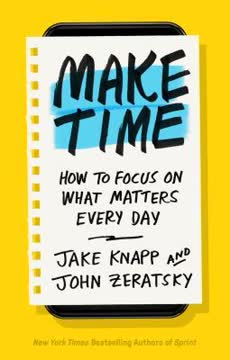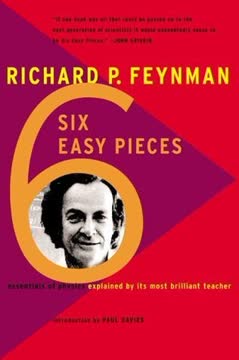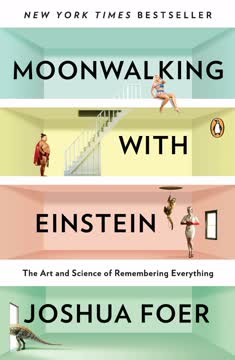ข้อสำคัญ
1. ความจำเป็นทักษะที่สามารถฝึกฝนและพัฒนาได้
ไม่มีความจำที่ไม่ดี มีแต่ความจำที่ได้รับการฝึกฝนหรือไม่ได้รับการฝึกฝน
ความจำสามารถปรับเปลี่ยนได้ เช่นเดียวกับกล้ามเนื้อ ความจำสามารถเสริมสร้างได้ผ่านการฝึกฝนอย่างสม่ำเสมอและเทคนิคที่เหมาะสม สมองของมนุษย์มีความสามารถในการเก็บข้อมูลอย่างมหาศาล โดยมีการประมาณว่ามันสามารถเก็บข้อมูลได้ถึง 2.5 เพตาไบต์ ศักยภาพนี้มักจะไม่ได้รับการใช้ประโยชน์เนื่องจากวิธีการเรียนรู้ที่ไม่เหมาะสม
ตำนานที่ถูกทำลาย:
- ความจำไม่มีขีดจำกัดที่สามารถ "เติมเต็ม" ได้
- อายุไม่จำเป็นต้องนำไปสู่การเสื่อมถอยของความจำ
- ยาและโทนิกสำหรับความจำมีประสิทธิภาพจำกัดเมื่อเปรียบเทียบกับการฝึกฝน
กุญแจสำคัญในการพัฒนาความจำอยู่ที่การเข้าใจว่ามนุษย์ประมวลผลและเก็บข้อมูลอย่างไร โดยการใช้แนวโน้มตามธรรมชาติของสมองและการใช้เทคนิคเฉพาะใด ๆ ทุกคนสามารถเพิ่มความสามารถในการจดจำและเรียกคืนข้อมูลได้อย่างมีนัยสำคัญ
2. การเชื่อมโยง จินตนาการ และการมองเห็นเป็นกุญแจสำคัญในการพัฒนาความจำ
การจินตนาการถึงสิ่งหนึ่งหรือเหตุการณ์หนึ่งเพียงครั้งเดียวเท่ากับการได้ยินเกี่ยวกับมันยี่สิบครั้ง
หลักการ AIR เป็นพื้นฐานของเทคนิคความจำที่มีประสิทธิภาพ:
- การเชื่อมโยง: การเชื่อมโยงข้อมูลใหม่กับความรู้ที่มีอยู่
- จินตนาการ: การสร้างภาพในจิตใจที่ชัดเจน
- การคิดที่แปลกประหลาด: การทำให้การเชื่อมโยงมีความแปลกหรือไร้สาระ
สมองของมนุษย์ถูกออกแบบมาให้จดจำภาพได้ง่ายกว่าคอนเซ็ปต์หรือคำที่เป็นนามธรรม โดยการแปลงข้อมูลให้เป็นภาพที่ชัดเจนและมีหลายประสาทสัมผัส เราสามารถปรับปรุงการเก็บรักษาและการเรียกคืนได้อย่างมีนัยสำคัญ ภาพที่แปลกประหลาดหรือมีอารมณ์มากยิ่งทำให้มันน่าจดจำมากขึ้น
เพื่อสร้างการเชื่อมโยงที่แข็งแกร่ง:
- ใช้ประสาทสัมผัสทั้งหมดในการมองเห็น
- ขยายสัดส่วนและปริมาณ
- รวมตัวเองเข้าไปในภาพจิต
- ทำให้ฉากน่าทึ่งหรือแปลกประหลาด
- รวมสีและการกระทำ
3. วิธีการเชื่อมโยงข้อมูลแบบลำดับช่วยให้การเรียกคืนดีขึ้น
การเชื่อมโยงเหมือนกับไข่มุกในสร้อยคอ
การเชื่อมโยงแบบลำดับ วิธีการเชื่อมโยงแบบโซ่เกี่ยวข้องกับการสร้างเรื่องราวหรือชุดของภาพในจิตใจที่เชื่อมโยงข้อมูลแต่ละชิ้นเข้าด้วยกัน โดยแต่ละรายการจะเชื่อมโยงกับรายการถัดไป สร้างเป็นโซ่ของการเชื่อมโยงที่สามารถเรียกคืนได้ง่ายตามลำดับ
การประยุกต์ใช้วิธีการเชื่อมโยงแบบโซ่:
- การจดจำรายการซื้อ
- การจดจำรายการที่ต้องทำ
- การเรียนรู้ลำดับเหตุการณ์หรือกระบวนการ
- การเรียกคืนจุดสำหรับการพูดหรือการนำเสนอ
กุญแจสำคัญในการใช้วิธีการเชื่อมโยงแบบโซ่อย่างมีประสิทธิภาพ:
- เชื่อมโยงเพียงสองรายการในแต่ละครั้ง
- สร้างภาพในจิตใจที่ชัดเจนและมีชีวิตชีวาสำหรับแต่ละลิงก์
- ทำให้การเชื่อมโยงมีความแปลกประหลาดหรือไม่ธรรมดาให้มากที่สุด
- ฝึกเรียกคืนโซ่ทั้งไปข้างหน้าและถอยหลัง
4. วิธีการตั้งชื่อเล่นส่วนตัว (PNN) ช่วยในการจดจำแนวคิดที่เป็นนามธรรม
เมื่อเราฟังชื่อของบุคคลที่ยากหรือยาว เรามักจะตั้งชื่อเล่นสั้น ๆ เพื่อให้มันออกเสียงได้ง่าย
ทำให้ซับซ้อนกลายเป็นง่าย วิธีการ PNN เกี่ยวข้องกับการสร้างชื่อเล่นที่คุ้นเคยและง่ายต่อการจินตนาการสำหรับแนวคิดที่เป็นนามธรรมหรือไม่คุ้นเคย เทคนิคนี้มีประโยชน์โดยเฉพาะในการจดจำ:
- คำศัพท์ทางเทคนิค
- คำศัพท์ในภาษาต่างประเทศ
- ชื่อของบุคคลและสถานที่
- คำศัพท์ทางวิทยาศาสตร์
ขั้นตอนในการใช้วิธีการ PNN:
- แยกคำที่ไม่คุ้นเคยออกเป็นส่วนประกอบที่ฟังดูคุ้นเคย
- สร้างภาพในจิตใจที่ชัดเจนจากเสียงที่คุ้นเคยเหล่านี้
- เชื่อมโยงภาพในจิตใจกับความหมายหรือบริบทของคำเดิม
ตัวอย่าง: "Exorbitant" กลายเป็น "Ex-orbit-ant" - จินตนาการถึงมดที่เคลื่อนออกจากวงโคจรรอบโลก
5. วิธีการซ่อนหาและค้นหา สร้างที่เก็บข้อมูลในจิตใจสำหรับการจัดเก็บข้อมูล
ความงามของวิธีนี้คือคุณสามารถมีสถานที่ซ่อนที่ไม่จำกัดซึ่งคุณสามารถจดจำข้อมูลได้ไม่จำกัด
ระบบการจัดเก็บข้อมูลในจิตใจ วิธีการซ่อนหาและค้นหา หรือที่เรียกว่าวิธี loci หรือเทคนิคพระราชวังความจำ เกี่ยวข้องกับการเชื่อมโยงข้อมูลกับสถานที่เฉพาะในสภาพแวดล้อมที่คุ้นเคย ซึ่งสร้างกรอบในจิตใจสำหรับการจัดเก็บและเรียกคืนข้อมูลจำนวนมาก
ขั้นตอนในการใช้วิธีการซ่อนหาและค้นหา:
- เลือกสถานที่หรือเส้นทางที่คุ้นเคย (เช่น บ้านของคุณ สำนักงาน หรือเส้นทางที่คุณเดินทางประจำวัน)
- ระบุจุดหยุดหรือสถานที่ที่แตกต่างกันในลำดับภายในสถานที่นั้น
- เชื่อมโยงข้อมูลแต่ละชิ้นกับจุดหยุดเฉพาะ
- เพื่อเรียกคืน ให้เดินทางในจิตใจผ่านสถานที่นั้น โดยเรียกคืนข้อมูลที่แต่ละจุดหยุด
ประโยชน์:
- อนุญาตให้จดจำรายการหรือชุดข้อมูลยาว ๆ
- ข้อมูลสามารถเรียกคืนได้ในลำดับใด ๆ
- การขาดรายการหนึ่งไม่ทำให้ลำดับทั้งหมดเสียหาย
- สามารถใช้สำหรับการพูด การนำเสนอ หรือการจดจำเนื้อหาทางวิชาการ
6. เทคนิคการช่วยจำและตัวย่อทำให้การเก็บข้อมูลซับซ้อนกลายเป็นเรื่องง่าย
เทคนิคช่วยจำคือวิธีการ อุปกรณ์ หรือเทคนิคการเรียนรู้ใด ๆ ที่ช่วยในการเก็บข้อมูล
เครื่องมือช่วยจำที่สร้างสรรค์ เทคนิคช่วยจำเป็นเครื่องมือที่ช่วยในการเข้ารหัสข้อมูลให้อยู่ในรูปแบบที่น่าจดจำมากขึ้น ซึ่งสามารถมีหลายรูปแบบ เช่น:
- เพลง
- ตัวย่อ
- อักษรย่อ
- เทคนิคเพลงช่วยจำ
- เทคนิควลีตัวเลข
- เทคนิคภาพช่วยจำ
ตัวอย่าง:
- "Roy G. Biv" สำหรับสีของรุ้ง
- "Every Good Boy Does Fine" สำหรับโน้ตดนตรีบนเส้นเสียง
- "My Very Educated Mother Just Served Us Noodles" สำหรับลำดับของดาวเคราะห์
เทคนิคเหล่านี้ทำงานโดย:
- แบ่งข้อมูลออกเป็นหน่วยที่จัดการได้ง่ายขึ้น
- สร้างรูปแบบหรือการเชื่อมโยงที่จำได้ง่ายกว่า
- มีส่วนร่วมกับประสาทสัมผัสและรูปแบบการเรียนรู้หลายรูปแบบ
- เพิ่มความสนุกหรือความคิดสร้างสรรค์ในกระบวนการเรียนรู้
7. การทำแผนที่ความคิดช่วยจัดระเบียบข้อมูลในรูปแบบภาพเพื่อการเรียนรู้ที่ดีขึ้น
แผนที่ความคิดอาจมีประสิทธิภาพมากกว่าวิธีการระดมความคิดและการจดบันทึกลำดับอื่น ๆ ด้วยเหตุผลหลายประการ
การจัดระเบียบในรูปแบบภาพ การทำแผนที่ความคิดเป็นเทคนิคกราฟิกที่สะท้อนถึงวิธีที่สมองประมวลผลข้อมูลตามธรรมชาติ มันรวมคำ สี และภาพเพื่อสร้างการแสดงภาพของหัวข้อหรือแนวคิด
องค์ประกอบสำคัญของแผนที่ความคิดที่มีประสิทธิภาพ:
- ภาพกลางที่แสดงถึงหัวข้อหลัก
- กิ่งก้านที่แผ่ออกมาจากกลางด้วยหัวข้อย่อยที่สำคัญ
- คำสำคัญและภาพบนแต่ละกิ่ง
- การใช้สีเพื่อจัดกลุ่มแนวคิดที่เกี่ยวข้อง
- การรวมสัญลักษณ์และองค์ประกอบภาพ
ประโยชน์ของการทำแผนที่ความคิด:
- ให้ภาพรวมของหัวข้อใหญ่
- รวมการคิดของสมองซีกซ้ายและขวา
- ส่งเสริมการเชื่อมโยงที่สร้างสรรค์ระหว่างแนวคิด
- ทำให้การจดบันทึกน่าสนใจและน่าจดจำมากขึ้น
- ช่วยให้การทบทวนและเรียกคืนข้อมูลได้อย่างรวดเร็ว
8. ระบบการเชื่อมโยงเสียงแปลงตัวเลขให้เป็นคำที่น่าจดจำ
เพื่อจดจำหมายเลขยาว ๆ เราใช้ระบบ Peg ขั้นสูงหรือระบบ Peg เสียง
ตัวเลขเป็นคำ ระบบ Peg เสียงกำหนดเสียงพยัญชนะให้กับแต่ละหลัก (0-9) ทำให้สามารถแปลงตัวเลขให้เป็นคำหรือวลี เทคนิคนี้มีประโยชน์โดยเฉพาะในการจดจำ:
- หมายเลขโทรศัพท์
- วันที่และเหตุการณ์ทางประวัติศาสตร์
- ค่าคงที่ทางคณิตศาสตร์
- รหัส PIN และรหัสผ่าน
ตัวอย่างรหัสเสียง:
1 = t, d
2 = n
3 = m
4 = r
5 = l
6 = j, ch, sh
7 = k, g
8 = f, v
9 = p, b
0 = s, z
ในการใช้ระบบ:
- แปลงตัวเลขเป็นเสียงพยัญชนะ
- เพิ่มสระเพื่อสร้างคำหรือวลี
- สร้างภาพในจิตใจที่ชัดเจนจากคำที่ได้
ตัวอย่าง: 314 (pi) กลายเป็น "mat+tar" - จินตนาการถึงพรมเช็ดเท้าที่ทำจากยางมะตอย
9. ทักษะการเรียนรู้ที่มีประสิทธิภาพช่วยเพิ่มการเรียนรู้และการเก็บข้อมูล
ทักษะใด ๆ ที่ช่วยเพิ่มความสามารถของบุคคลในการเรียนรู้และสอบผ่านด้วยคะแนนที่ยอดเยี่ยมสามารถเรียกว่าทักษะการเรียนรู้
เพิ่มประสิทธิภาพการเรียนรู้ ทักษะการเรียนรู้ที่มีประสิทธิภาพเกินกว่าการใช้เทคนิคการจดจำ โดยรวมถึงกลยุทธ์สำหรับการจัดการเวลา การจดบันทึก และการเตรียมสอบ
ทักษะการเรียนรู้ที่สำคัญ:
- การตั้งเป้าหมาย SMART (เฉพาะ วัดผลได้ บรรลุได้ เกี่ยวข้อง มีเวลา)
- วิธี PQRST (ดูตัวอย่าง ตั้งคำถาม อ่าน สรุป ทดสอบ)
- การทำแผนที่ความคิดสำหรับการจดบันทึกและการสรุป
- การทบทวนแบบกระจายสำหรับการเก็บข้อมูลระยะยาว
- การเรียกคืนแบบแอคทีฟผ่านการทดสอบตนเอง
เคล็ดลับเพิ่มเติม:
- สร้างสภาพแวดล้อมการเรียนรู้ที่เหมาะสม
- ใช้เทคนิค Pomodoro สำหรับการทำงานที่มุ่งเน้น
- สอนแนวคิดให้ผู้อื่นเพื่อเสริมสร้างความเข้าใจ
- ใช้เทคนิคช่วยจำสำหรับเนื้อหาที่ยาก
- ฝึกฝนกับข้อสอบเก่าหรือการทดสอบจำลอง
10. เทคนิคการจำสามารถนำไปใช้กับวิชาการต่าง ๆ ได้
เทคนิคการจำมีบทบาทสำคัญในการเปลี่ยนมุมมองของนักเรียนต่อวิชาที่น่าเบื่อและยากลำบาก
การประยุกต์ใช้ข้ามสาขา เทคนิคการจำสามารถปรับใช้กับวิชาการต่าง ๆ ทำให้การเรียนรู้มีความน่าสนใจและมีประสิทธิภาพมากขึ้นในทุกสาขา
ตัวอย่างการประยุกต์ใช้เฉพาะวิชา:
- เคมี: การจดจำตารางธาตุโดยใช้ระบบเสียง
- ประวัติศาสตร์: การใช้วิธีซ่อนหาและค้นหาเพื่อจดจำเหตุการณ์ตามลำดับเวลา
- ชีววิทยา: การสร้างตัวย่อสำหรับการจำแนกประเภท
- คณิตศาสตร์: การมองเห็นสูตรโดยใช้วิธีการเชื่อมโยงแบบโซ่
- ภาษา: การใช้วิธี PNN ในการเรียนรู้คำศัพท์
ประโยชน์ของการใช้เทคนิคการจำในวิชาการ:
- เพิ่มความสนใจในเนื้อหา
- ปรับปรุงการเก็บข้อมูลระยะยาวของแนวคิดสำคัญ
- ลดความวิตกกังวลในการสอบโดยการเพิ่มความมั่นใจในการเรียกคืน
- ส่งเสริมการคิดสร้างสรรค์และการแก้ปัญหา
- ทำให้การเรียนรู้สนุกสนานและน้อยน่าเบื่อ
อัปเดตล่าสุด:
FAQ
What's "How to Memorize Anything" about?
- Comprehensive Memory Guide: "How to Memorize Anything" by Aditi Singhal and Sudhir Singhal is a detailed guide on improving memory using various techniques and methods.
- Structured Approach: The book is divided into sections that cover the basics of memory, memory techniques, applications, and specific sections for students.
- Practical Techniques: It provides practical memory techniques like the Chain Method, Peg System, and Mind Maps to help readers memorize information effectively.
- Real-Life Applications: The book includes applications for everyday tasks, academic subjects, and even tricks to amaze friends, making it versatile for different needs.
Why should I read "How to Memorize Anything"?
- Enhance Memory Skills: The book offers proven techniques to enhance memory skills, which can be beneficial in both personal and professional life.
- Wide Applicability: It covers a range of topics from memorizing shopping lists to complex academic subjects, making it useful for students, professionals, and homemakers.
- Expert Insights: Authored by renowned memory trainers, the book provides insights and methods that have been tested and proven effective.
- Boost Confidence: By mastering memory techniques, readers can boost their confidence in handling information and improve their cognitive abilities.
What are the key takeaways of "How to Memorize Anything"?
- Memory Techniques: Learn various memory techniques such as the Chain Method, Peg System, and Mind Maps to improve recall.
- Practical Applications: Discover how to apply these techniques to everyday tasks, academic subjects, and professional scenarios.
- Understanding Memory: Gain a deeper understanding of how memory works and how to harness its potential.
- Lifestyle Tips: The book also provides tips on improving concentration and lifestyle changes to support better memory.
How does the Chain Method work in "How to Memorize Anything"?
- Sequential Linking: The Chain Method involves linking items in a list by creating a story or sequence, making it easier to recall.
- Visualization: It emphasizes the use of vivid and ridiculous imagery to make associations memorable.
- Practical Use: This method is particularly useful for memorizing lists, such as shopping lists or points in a presentation.
- Step-by-Step Process: The book provides a step-by-step guide on how to create these associations effectively.
What is the Peg System in "How to Memorize Anything"?
- Number Association: The Peg System involves associating numbers with specific images or words to help memorize sequences.
- Rhyme and Shape Methods: It includes techniques like the Number Rhyme Method and Number Shape Method to create memorable associations.
- Versatile Applications: This system can be used for memorizing lists, dates, and even complex numerical data.
- Enhanced Recall: By converting abstract numbers into tangible images, the Peg System enhances recall and reduces confusion.
How are Mind Maps used in "How to Memorize Anything"?
- Visual Note-Taking: Mind Maps are a visual way of taking notes that mimic the brain's natural way of processing information.
- Central Idea Expansion: They start with a central idea and expand outward with branches representing subtopics and details.
- Creative and Colorful: The use of colors and images makes Mind Maps engaging and easier to remember.
- Organizational Tool: They are useful for organizing thoughts, planning events, and summarizing information for better understanding and recall.
What is the Personal Nick Name (PNN) Method in "How to Memorize Anything"?
- Abstract Word Visualization: The PNN Method involves creating a nickname for difficult or abstract words to make them easier to visualize.
- Personalized Associations: It allows for personalized associations, making it adaptable to individual preferences and experiences.
- Wide Range of Uses: This method is effective for memorizing foreign language words, scientific terms, and complex vocabulary.
- Enhanced Memory: By converting abstract concepts into familiar images, the PNN Method enhances memory retention and recall.
How can "How to Memorize Anything" help students?
- Subject-Specific Techniques: The book provides memory techniques tailored for subjects like Chemistry, History, and Biology.
- Exam Preparation: It offers strategies for memorizing formulas, dates, and long answers, aiding in exam preparation.
- Smart Study Skills: Students can learn effective study habits, goal setting, and revision techniques to optimize their learning.
- Confidence Building: By mastering these techniques, students can improve their academic performance and build confidence in their abilities.
What are the best quotes from "How to Memorize Anything" and what do they mean?
- "Reading this book is smart. Putting what you learn into practice is even smarter." This quote emphasizes the importance of applying the techniques learned in the book to truly benefit from them.
- "Our brain has a limited capacity for words, but an unlimited capacity for images or pictures." It highlights the power of visualization in memory retention, encouraging readers to use imagery for better recall.
- "A good memory is a powerful asset in everyone’s life." This quote underscores the value of a strong memory in achieving success across various aspects of life.
How does "How to Memorize Anything" address common memory myths?
- Memory Capacity: The book debunks the myth that memory has a limited capacity, explaining that it can be expanded with the right techniques.
- Age and Memory: It challenges the belief that memory declines with age, showing that it can be maintained and improved with practice.
- Pills and Memory: The authors clarify that while supplements can support brain health, they are not a substitute for memory training.
- Innate Memory Ability: The book argues that memory is not fixed at birth and can be developed through training and practice.
How can "How to Memorize Anything" improve concentration?
- Attention Training: The book provides exercises and techniques to improve attention, a key component of memory.
- Lifestyle Changes: It suggests lifestyle changes, such as a healthy diet and regular exercise, to support better concentration.
- Meditation Benefits: Meditation is recommended as a way to enhance focus and reduce distractions.
- Avoiding Multitasking: The book advises against multitasking, promoting single-task focus for improved concentration and memory.
What lifestyle tips does "How to Memorize Anything" offer for better memory?
- Healthy Diet: The book emphasizes the importance of a brain-healthy diet rich in antioxidants and essential nutrients.
- Regular Exercise: Physical activity is recommended to boost brain function and improve memory.
- Adequate Sleep: Ensuring sufficient sleep is highlighted as crucial for memory consolidation and cognitive performance.
- Stress Management: Techniques for managing stress, such as meditation and relaxation exercises, are provided to support mental clarity and memory.
รีวิว
วิธีการจดจำทุกสิ่ง ได้รับการตอบรับที่ดีเป็นส่วนใหญ่ โดยมีคะแนนเฉลี่ยอยู่ที่ 4.06/5 ผู้อ่านชื่นชอบเทคนิคที่ใช้ได้จริงในการพัฒนาความจำ เช่น ระบบเพก, การทำแผนที่ความคิด และการใช้คำช่วยจำ หลายคนพบว่ามันมีประโยชน์สำหรับนักเรียนและผู้เริ่มต้น บางคนวิจารณ์หนังสือเล่มนี้เกี่ยวกับการพิมพ์ผิดและข้อเรียกร้องที่ไม่มีหลักฐาน ผู้อ่านสังเกตเห็นถึงประสิทธิภาพในการสอนเทคนิคการจำ แม้ว่าบางส่วนอาจจะไม่ค่อยมีประโยชน์เท่าไรนัก หนังสือเล่มนี้ได้รับคำชมในเรื่องการอธิบายอย่างละเอียดและตัวอย่างที่ใช้ได้จริง ทำให้มันมีคุณค่าสำหรับผู้ที่ต้องการพัฒนาทักษะความจำของตนเอง
Similar Books











